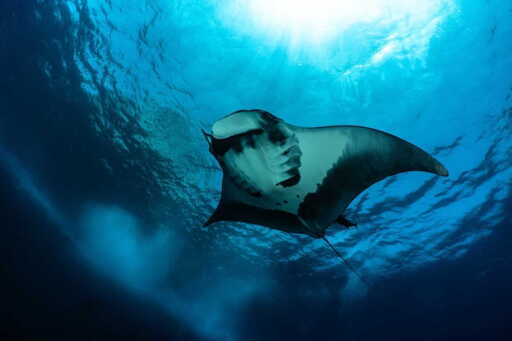In the darkness nearly a mile beneath the ocean’s surface, where the pressure would crush a human and temperatures hover just above freezing, a creature with wings wider than a car glides through the abyss. It’s not searching for food or fleeing danger, but most likely finding direction. That’s the conclusion of a study that’s the first of its kind to examine in detail the extreme deep-diving behavior of oceanic manta rays (Mobula birostris). The findings, published in the journal Frontiers in Marine Science, reveal that the rays can dive to depths of 1,250 meters (4,100 feet, or about three-quarters of a mile), part of the water column known as the midnight zone, which researchers say may help them navigate across thousands of miles of open water. “No one ever dreamed mantas would go this deep,” Mark Erdmann, shark conservation director at the NGO Re:wild and a co-author of the study, told Mongabay. “The likely reason the mantas braved the cold, dark, deep waters was not in search of food, nor to avoid predators, but likely for navigational purposes.” An international team of researchers tracked 24 manta rays between 2012 and 2022. They attached special tags to the animals in waters near Peru, Indonesia and Aotearoa New Zealand, recording more than 46,000 dives. Satellite tagging an oceanic manta ray (Mobula birostris) near New Zealand. Photo courtesy of Edy Setyawan The rays appear to gather navigational information from the stable conditions of the deep ocean, where temperature, oxygen levels and possibly…This article was originally published on Mongabay
From Conservation news via this RSS feed


